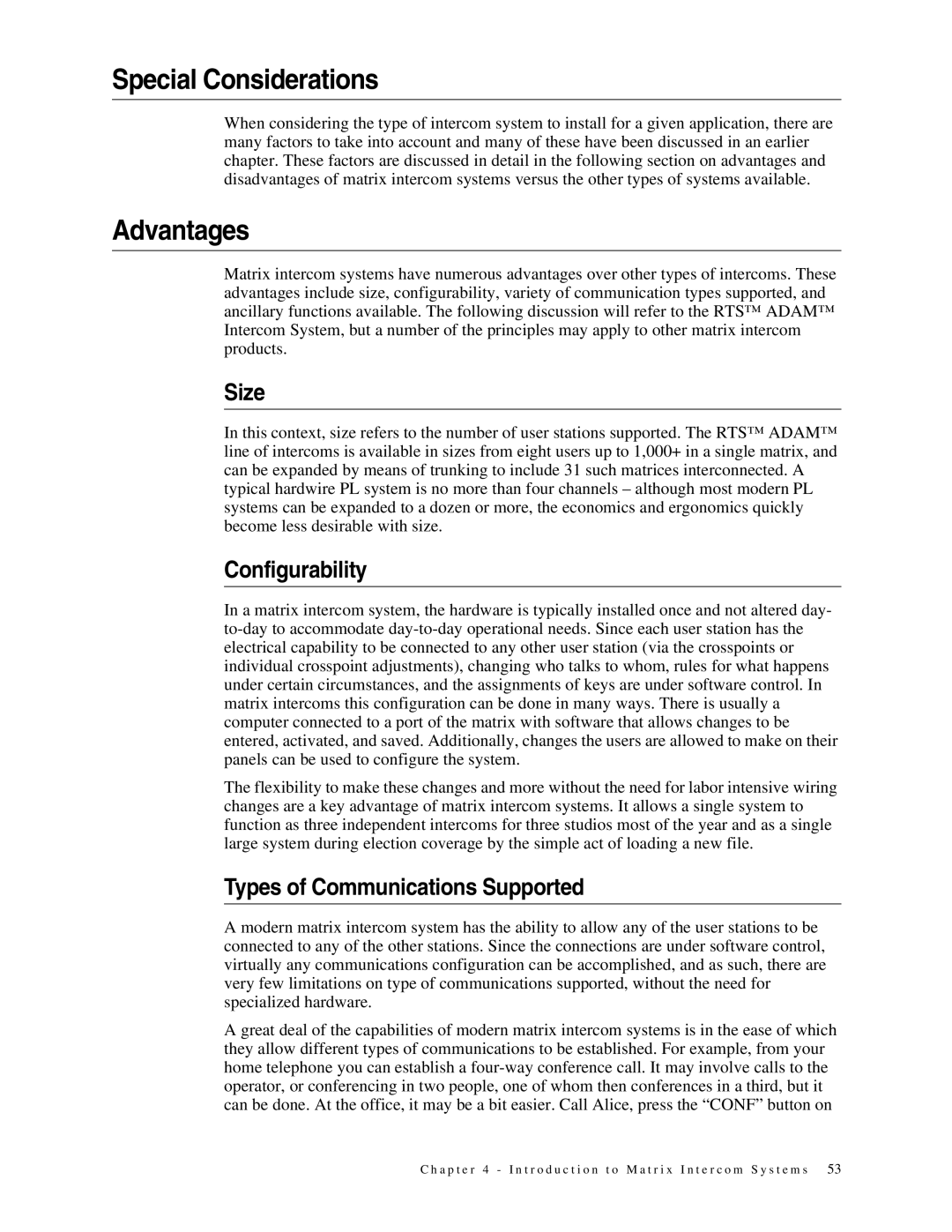
Special Considerations
When considering the type of intercom system to install for a given application, there are many factors to take into account and many of these have been discussed in an earlier chapter. These factors are discussed in detail in the following section on advantages and disadvantages of matrix intercom systems versus the other types of systems available.
Advantages
Matrix intercom systems have numerous advantages over other types of intercoms. These advantages include size, configurability, variety of communication types supported, and ancillary functions available. The following discussion will refer to the RTS™ ADAM™ Intercom System, but a number of the principles may apply to other matrix intercom products.
Size
In this context, size refers to the number of user stations supported. The RTS™ ADAM™ line of intercoms is available in sizes from eight users up to 1,000+ in a single matrix, and can be expanded by means of trunking to include 31 such matrices interconnected. A typical hardwire PL system is no more than four channels – although most modern PL systems can be expanded to a dozen or more, the economics and ergonomics quickly become less desirable with size.
Configurability
In a matrix intercom system, the hardware is typically installed once and not altered day-
The flexibility to make these changes and more without the need for labor intensive wiring changes are a key advantage of matrix intercom systems. It allows a single system to function as three independent intercoms for three studios most of the year and as a single large system during election coverage by the simple act of loading a new file.
Types of Communications Supported
A modern matrix intercom system has the ability to allow any of the user stations to be connected to any of the other stations. Since the connections are under software control, virtually any communications configuration can be accomplished, and as such, there are very few limitations on type of communications supported, without the need for specialized hardware.
A great deal of the capabilities of modern matrix intercom systems is in the ease of which they allow different types of communications to be established. For example, from your home telephone you can establish a
C h a p t e r 4 - I n t r o d u c t i o n t o M a t r i x I n t e r c o m S y s t e m s 53
